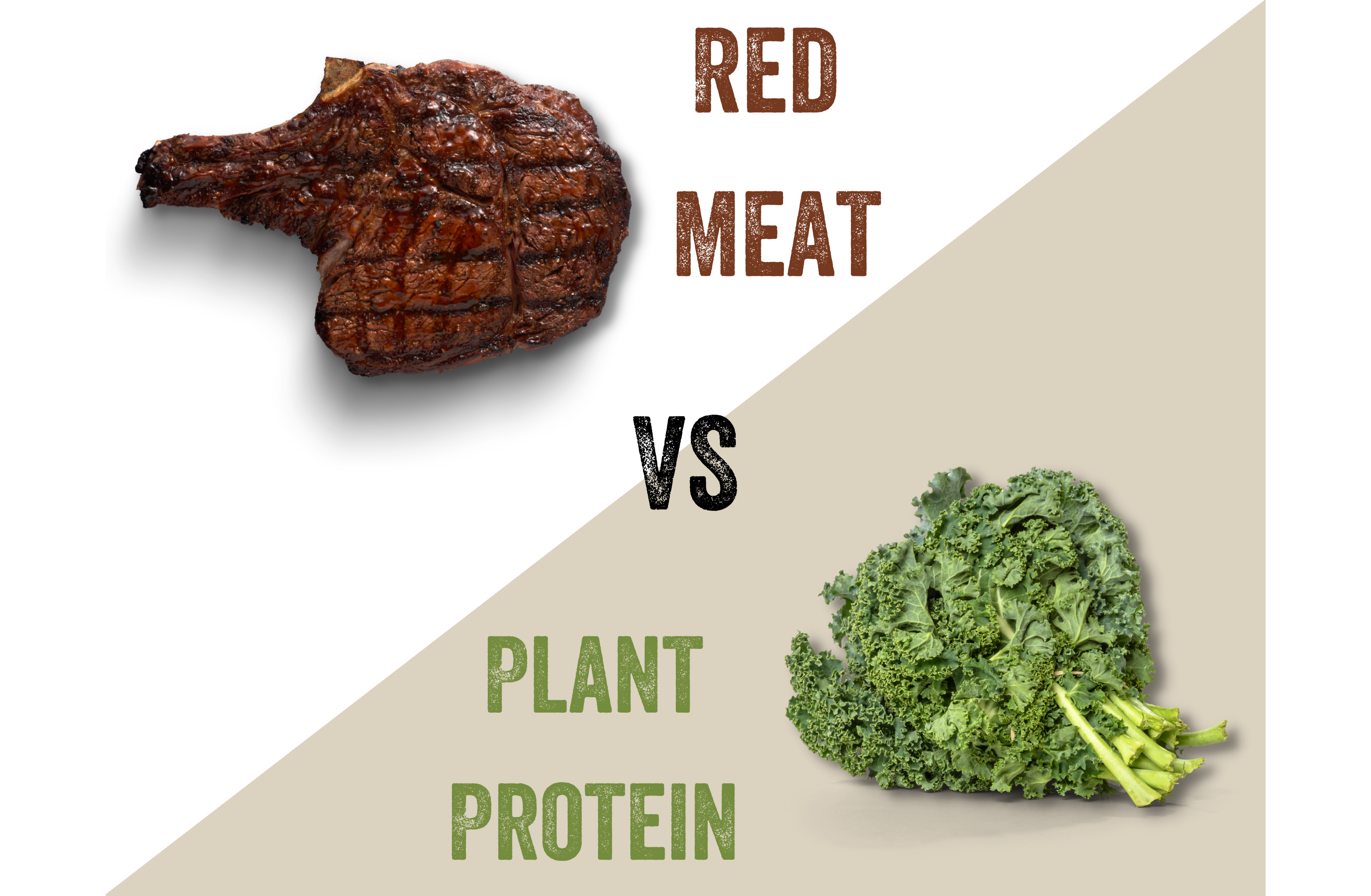I know that many of you enjoy learning about the new research being done in nutrition, sustainable agriculture, and more, but you may also not have the time or know-how to read scientific studies.
That’s why I’ve decided to write short summaries of some particularly pertinent or important recent studies.
My goal will be to not simply state the results of the study, but to walk you quickly through it and show how the conclusions were found and their significance.
My hope is that I can use these study summaries to continue educating you and to train you on how you can effectively read studies yourself. However, if you only want to see the full article, then feel free to skip the summary and just go straight to it.
So, without further ado, the study for this article is called “Plasma Amino Acid Appearance and Status of Appetite Following a Single Meal of Red Meat or a Plant-Based Meat Analog: A Randomized Crossover Clinical Trial”. You can find the full study here.
Goal of the Study:
This study was done by some New Zealand researchers who wanted to assess certain differences between red meat and plant-based meat analogs. Specifically, they compared lamb, pasture-raised beef, grain-finished beef, and Beyond Burgers.
Their primary objective was to determine the appearance of amino acids (the building blocks of proteins) in the plasma after eating the different protein sources. This is important because the appearance of amino acids in plasma denotes how much of the protein consumed is actually absorbed and usable by the body.
Secondarily, they analyzed the differences in glucose, insulin, appetite, and cravings in the different groups. (Spoiler alert: There weren’t any.)
Important Terms:
These are two terms you should know to better understand this study.
Bioavailability: This refers to how much of a certain nutrient is actually absorbed and used by the body when consumed. For example, one protein source may tout that it contains 30 grams of protein when in reality, only 20 g of that protein is actually used in the body. The reasons for this difference will be explained later.
Postprandial: This simply means after a meal. So, when the researchers say they are measuring the postprandial digestive response it means the response after eating.
What the Researchers Did:
Each participant came in weekly to eat one of the 4 proteins in a burrito. The amount of protein between the different sources was kept the same.
They then collected blood over 4 hours to look at different markers like plasma amino acids.
It is worth noting that this study was conducted exclusively on young, healthy males which makes it more difficult to generalize results to everyone.
What They Found:
As mentioned in the beginning, there was no difference in glucose, insulin, appetite, and cravings in the different groups.
However, they did find a significant difference in postprandial plasma amino acids between the animal meat sources and the plant-based burger.
When the participants ate animal meat they absorbed more protein than when they ate the plant-based burger, even though the sources had similar protein levels.
Why Is This Important?
Essentially, this study shows that animal protein is superior to plant protein in that it provides more bioavailable protein meaning you can eat less of it to get the same amount of protein.
The researchers hypothesized as to why this is the case. The most likely reason is because of anti-nutritional factors found in plants which are known to inhibit digestion of nutrients.
Findings like this are essential to add to the discussion around replacing meat with plant-based sources of protein!
In conclusion, this is an important study with findings that call into question many of the claims made by plant-based meat companies. It shows that in these subjects, the plant-based meat alternatives were nutritionally inferior with regards to protein. Simple as that.
Make sure you share this summary with friends and family and let others know of these findings. It is important that when we make decisions essential to human health we have all the facts!
To better health,
Diana
Reference Study: https://www.ncbi.nlm.nih.gov/pmc/articles/PMC9154224/









3 thoughts on “Study Summary: Protein Availability of Red Meat vs. Plant-Based Meat”
thanks for sharing this & please do more!
oftentimes, when i’ll try to counter the myths around fake meat vs animal based foods i’ve been met with disbelief (“but everyone knows”, “prove it!” or “it says right here on the box”) … being able to confidently & coherently cite this study will help me out next time!
The last sentence is insanely ironic considering that animal agriculture is destroying the planet that we live on. There have never been less fish in the ocean, more methane in our atmosphere, it is the number one cause of rainforest deforestation. Cutting out meat is one of the best things, if not THE best, you can do as an individual for the health of the planet- our Earth that we share with one another and with every creature on this planet- that is more “essential to human health” than anything else I can think of.
Please check out my book Sacred Cow, and film also called Sacred Cow, that explain why what you’ve been told about grazing animals destroying the planet is not true. Have a great day!